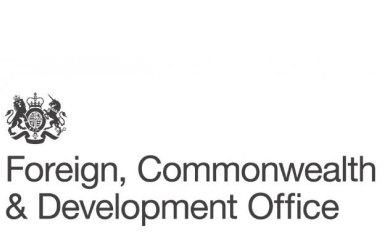BIM Community for Africa with the aim to encourage BIM adoption across the continent.
ISO 19650 is the prominent global standard for the implementation of BIM, focusing on the collaborative process integral to the entire life cycle of constructed assets. Developed and published by the International Organization for Standardization (ISO), this standard serves as a comprehensive framework for managing information from the conception of a project, through construction and operation to its eventual decommissioning. The development and publication of ISO 19650 highlights the commitment of international standards bodies to creating a consistent and efficient approach to BIM implementation on a global scale.
ISO 19650 is a multi-part standard. Part 1 delineates fundamental concepts and principles, while Part 2 provides practical guidance for information management throughout the project life cycle. The scalability of ISO 19650 allows organizations to tailor its application to the specific needs and intricacies of their projects. As an internationally recognized standard, ISO 19650 reflects the collaborative efforts of standards bodies to enhance global construction industry practices. Throughout this process, transparency, collaboration, and consensus-building are key principles. ISO standards, including ISO 19650, are developed with input from experts and stakeholders worldwide to ensure that they reflect a global consensus on best practices.
A country might choose to adopt ISO 19650 for several reasons, all of which contribute to the standard’s potential benefits in enhancing the efficiency and effectiveness of construction and infrastructure projects. Some of the reasons why a country might decide to adopt ISO 19650:
- Global standardisation of processes
- Support interoperability and collaboration
- Consider a quality assured approach to information management
- Competitive advantage and potential for cross boarder trade
- Improved project delivery outcomes
In summary, the adoption of ISO 19650 by a country can bring about international alignment, improved collaboration, risk reduction, and enhanced competitiveness in the construction industry, ultimately contributing to more successful and sustainable infrastructure development. Countries will usually adopt ISO 19650 by publishing a national annex to the standard.
ISO 19650 is the prominent global standard for the implementation of BIM, focusing on the collaborative process integral to the entire life cycle of constructed assets. Developed and published by the International Organization for Standardization (ISO), this standard serves as a comprehensive framework for managing information from the conception of a project, through construction and operation to its eventual decommissioning. The development and publication of ISO 19650 highlights the commitment of international standards bodies to creating a consistent and efficient approach to BIM implementation on a global scale.
ISO 19650 is a multi-part standard. Part 1 delineates fundamental concepts and principles, while Part 2 provides practical guidance for information management throughout the project life cycle. The scalability of ISO 19650 allows organizations to tailor its application to the specific needs and intricacies of their projects. As an internationally recognized standard, ISO 19650 reflects the collaborative efforts of standards bodies to enhance global construction industry practices. Throughout this process, transparency, collaboration, and consensus-building are key principles. ISO standards, including ISO 19650, are developed with input from experts and stakeholders worldwide to ensure that they reflect a global consensus on best practices.
A country might choose to adopt ISO 19650 for several reasons, all of which contribute to the standard’s potential benefits in enhancing the efficiency and effectiveness of construction and infrastructure projects. Some of the reasons why a country might decide to adopt ISO 19650:
- Global standardisation of processes
- Support interoperability and collaboration
- Consider a quality assured approach to information management
- Competitive advantage and potential for cross boarder trade
- Improved project delivery outcomes
In summary, the adoption of ISO 19650 by a country can bring about international alignment, improved collaboration, risk reduction, and enhanced competitiveness in the construction industry, ultimately contributing to more successful and sustainable infrastructure development. Countries will usually adopt ISO 19650 by publishing a national annex to the standard.
This is the Dubai e-submission BIM Roadmap, published by the RTA
https://bim.geodubai.ae/Documents/Dubai_BIM_Roadmap.pdf
An archive version of this information article has been created if the original is no longer accessible (Archive information from January 2024)
#SPILL!
The BIM Institute is Africa’s official voice for BIM, as a non-profit company their objective is to improve the construction quality and productivity of the built environment through the leadership of information and education. It is impartial and remains software agnostic while supporting and helping to deliver the standards and requirements for BIM in Africa. The BIM Institute serves as Africa’s BIM voice in learning and development for the built environment. The organisation also provides guidance to AEC organisations wanting to implement BIM and programmes specially designed for students and post graduate in the built environment industry in the form of blended learning modules of interactive online LMS, ongoing webinars with experts around the world, range of online BIM tools software courses and access to virtual expo demonstrations with leading technology vendors. The information is directed at organisations that have already made the decision to implement BIM and are now asking the question “So what do we do next?” The BIM Institute for Africa provides some generic guidance that will need to be adapted to suit the particular needs of your organisation or project.
The BIM Institute website contains several useful resources which can be used by organisations looking to implement BIM within their organisation. The website contains information about the group as well as a membership portal to sign up as a free member. The website contains the BIM Institutes “National BIM Guide” as well as a blog of recent news and details of past, present and future events. Finally the website contains a series of online learning and training modules.
Implementation of BIM has proven to deliver major performance improvements in efficiency, design quality, constructability, waste reduction, environmental performance, and capital & operational cost management of built environment projects. Yet BIM implementation in low BIM maturity markets, such as the UAE, is limited to technology applications which fail to deliver the full potential of BIM benefits to client originations. The purpose of this paper is to investigate BIM implementation from a clientÂ’s perspective and to present a case study that exhibits a level 2 BIM implementation process in a traditional procurement environment. The study has used a case study approach combined with a literature review. A critical appraisal of relevant literature is presented to highlight key issues hindering BIM implementation for client organizations, especially in developing BIM markets, such as the UAE. The research is collected using an action research approach within a case study, including project document audit, participation in project collaboration meetings and extensive communication with the project stakeholders. The case study is presented in a practice-oriented research format describing the project details, procurement approach, BIM development & management process and benefits achieved for the project client. The paper presents a structured approach to strategically introduce BIM within a low BIM maturity market, creating partnering relationships, empower the supply chain partners and achieve significant BIM benefits with minimum disruption to existing work practices. The paper highlights that although BIM requires a step-change in the work practices of the construction industry, yet it is possible to successfully implement BIM with traditional procurement settings, which may be a critical feature in a certain market or a client requirement. The paper concludes that there is a need for case study based, practice-oriented research work within the domain of BIM implementation. Construction clients in low maturity BIM markets are concerned about the perceived benefits of BIM and its practical implementation within existing business practices, which is addressed in this paper. Overall, the findings of this study are useful for construction industry clients and academia in redefining the existing work practices to incorporate BIM-enabled processes and applications.
This case study document was written by Muhammad Tariq Shafiq, Assistant Professor at United Arab Emirates University, Department of Architectural Engineering. Muhammad Tariq Shafiq is an Architectural Engineer, and his postgraduate qualifications include an MSc in Project Management in Construction from the University of Salford, UK, a PhD from the School of Built Environment, Northumbria University. He is a member of the Pakistan Engineering Council, a Fellow of Building Research Institute UK, and a certified BIM Manager from the Royal Institute of Chartered Surveyors (RICS).
https://openconstructionbuildingtechnologyjournal.com/VOLUME/15/PAGE/129/FULLTEXT/
#SPILL!


